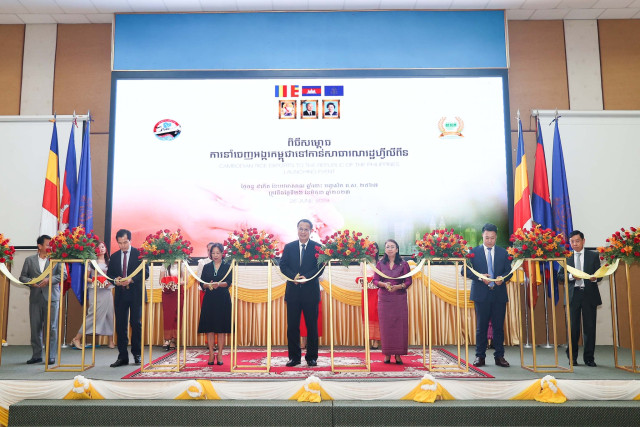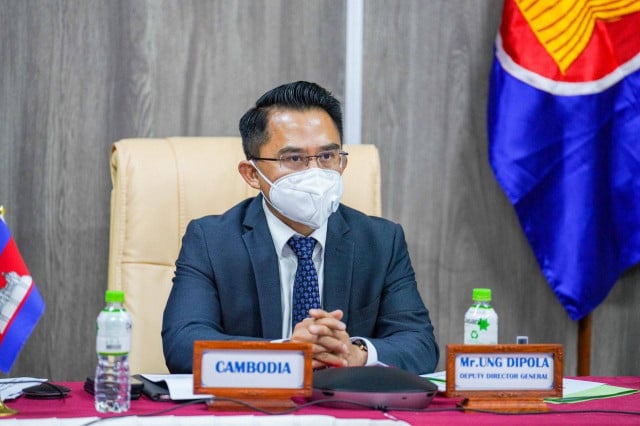Riel Currency Encouraged in Less Urban Areas

- By Leang Delux
- October 21, 2023 7:00 PM
PHNOM PENH - Having more presence at the community level where transactions are often in riels, microfinance institutions have an important role in promoting the use of our national currency in less urbanised areas.
Leang Delux, senior journalist of ThmeyThmey News, interviewed Sok Voeun, chairman of the board of directors of Cambodia Microfinance Association (CMA).
Leang Delux: How has the Cambodia Microfinance Association been promoting the use of riel to its customers?
Sok Voeun: We have been conforming to the guidelines and regulations of the National Bank of Cambodia to achieve a set balance of riel and other currencies. At the same time, we have encouraged our members to introduce more riel to their targeted customers as using our national currency has benefits. Although the progress is not skyrocketing, it does grow gradually from year to year.
Looking at the years from 2017 or 2018, riel only accounted for 12 to 13 percent of the microfinance sector. In 2022, the number had jumped to around 20 percent. The US dollar is still the most circulated currency, followed by our riel, Thai baht and Vietnamese dong respectively.
_1697864181.png)
Leang Delux: The US dollar has been circulating in Cambodia for quite some time. Are there any challenges when the sector tries to encourage people to switch to riel?
Sok Voeun: Challenges do exist. Regardless, our aim is still moving forward. Some people still say that dollars are easier to handle as the notes contain more value. At the same time, we have educated our loan officers at the community level to understand the use of riel and to explain to their customers accordingly. Although the urban areas prefer dollars, less urban areas still prefer riels in their transactions when considering their income, expenses and loans. The same currency across many platforms makes spending and saving easier.
Unlike today, where more people prefer riel, a decade ago, some people who lived near the border of Thailand regularly used baht, let alone a few decades ago when some of those people even felt strange seeing the riel notes.
At the community level where microfinance generally operates, people who work in agriculture may want to take a loan in riel as it is easier to pay back the loan in the future without having to convert to dollars and worry about the ever changing exchange rate. Plus, riel notes that are old or dirty can be substituted for new ones for free at the National Bank of Cambodia, unlike US dollars for which we have to pay a fee.
However, there are drawbacks as people still need to use dollars to buy agricultural machinery, cars or motorcycles which are manufactured abroad. Nevertheless, we continue to overcome these obstacles. A great portion of their income is still generated in riels.
_1697864207.png)
Leang Delux: When do you think riel will become significantly circulated inside our economy?
Sok Voeun: Monetary policy takes time to implement. Immediately returning to a large proportion of riel is doable. However, consequences might occur on whether people and other investors are willing to offer their trust or not. For me, it might take between 10 to 15 years for riels to be prioritised over dollars. If we let it grow gradually like this, the result can be more stable and stakeholders can share their trust.
_1697864234.png)
Leang Delux: How has the use of riel progressed in traditional markets and convenience stores?
Sok Voeun: For some convenient stores and supermarkets, goods are both labelled in dollars and riels. It is not that complicated to label an exact price since there is no culture of bargain in this kind of store. On the other hand, people still regularly practise the culture of bargaining at the traditional markets which makes it hard to put on labels. However, at least, if the goods inside a traditional market is sold in dollars, the sellers still genuinely accept riels if the buyers prefer to use their nation’s currency. Nevertheless, sellers are encouraged to practise a friendly rate of exchange between the two currencies so that the buyers can feel confident in continuing spending riels.
_1697864262.png)
Conducted in Khmer for ThmeyThmey News, the article was translated by Ky Chamna for Cambodianess News.
To watch the original interview in Khmer, click here.
Related contents:
Could the Khmer Currency “Riel” be Named After a Fish?
Getting Real with Riel: Reasons Behind Promoting Khmer Currency
Riel Currency Makes Singapore Airport Debut















